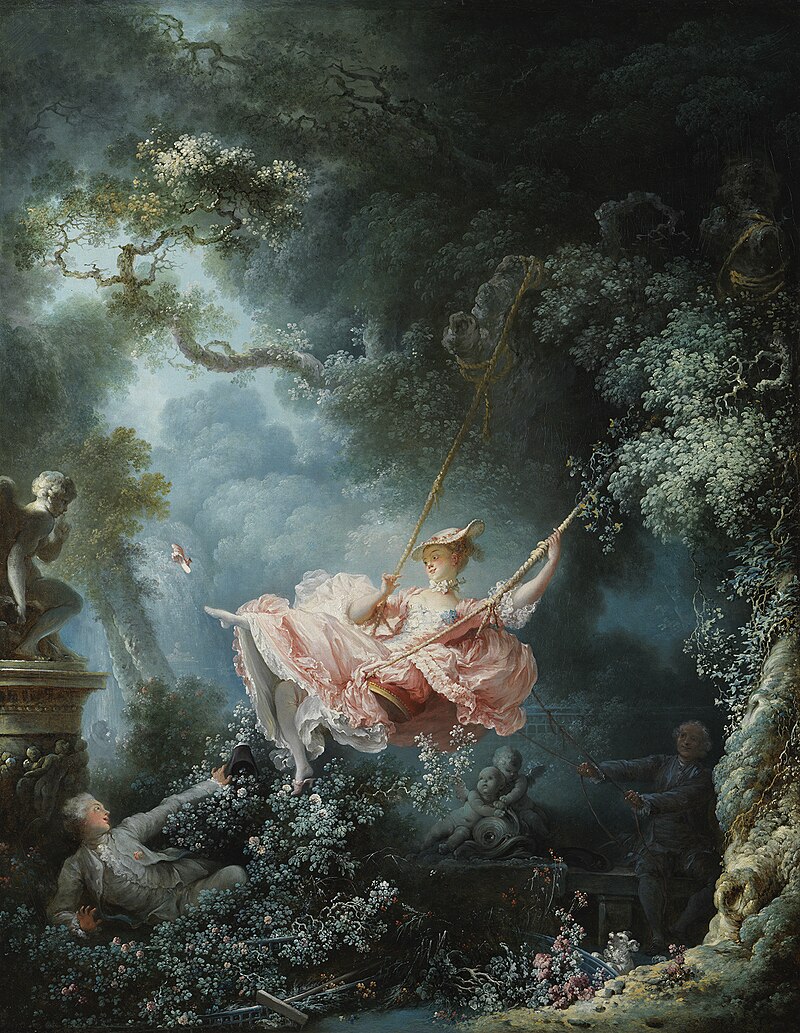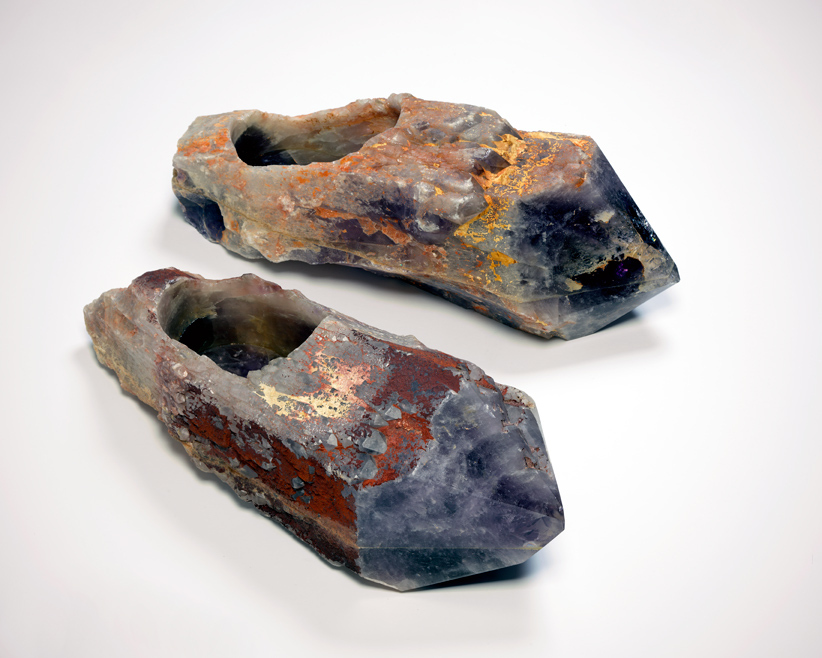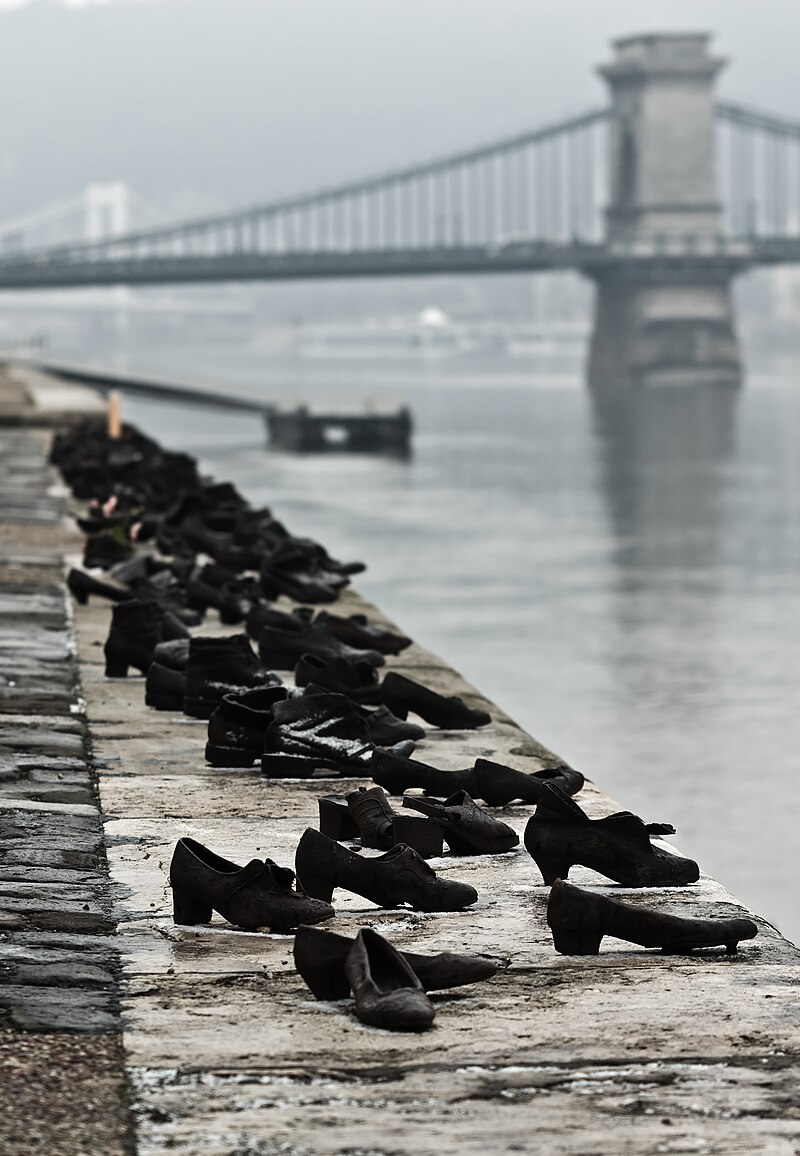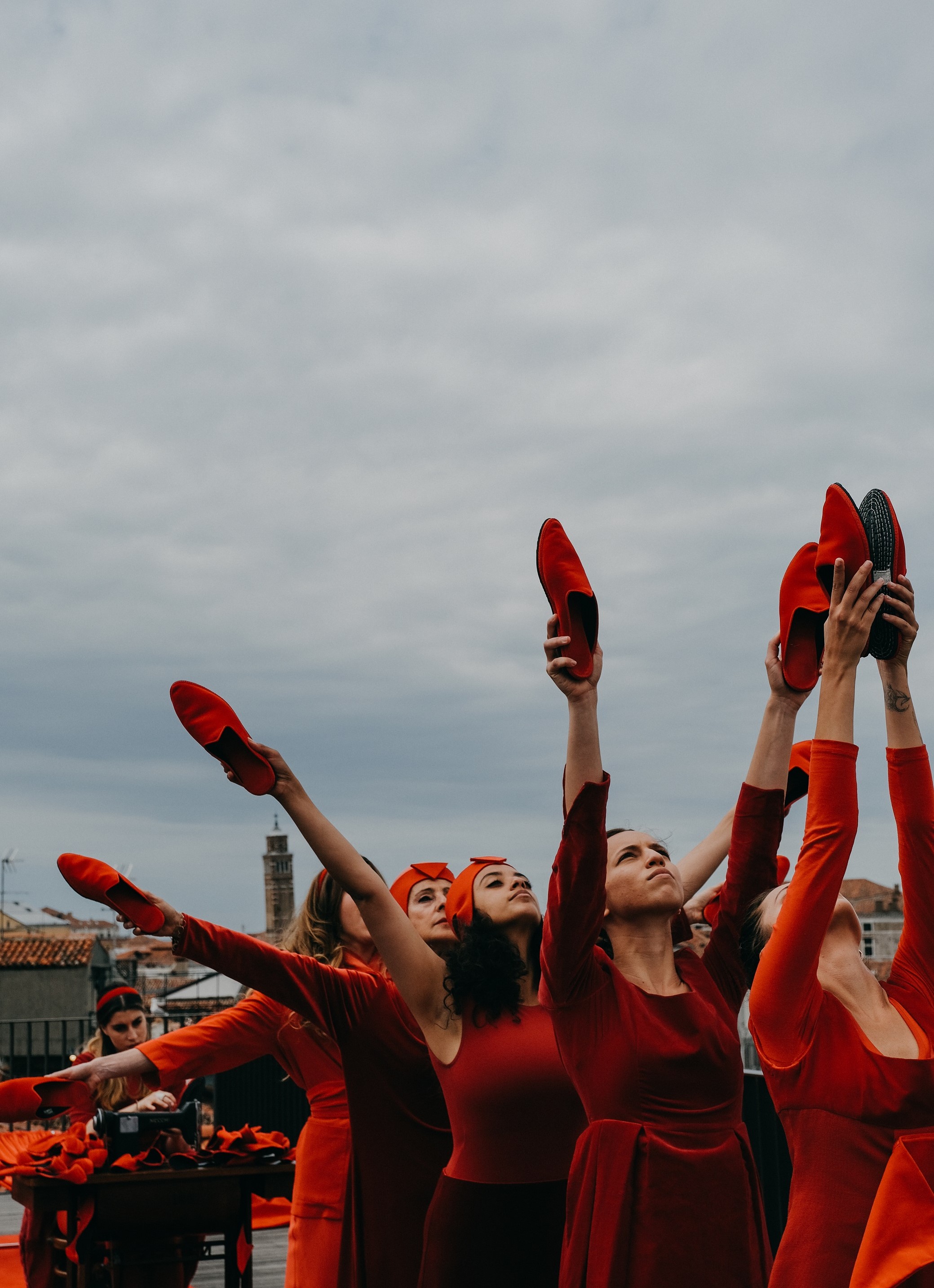These boots are made for walking
12/30/2024
13 min reading time
Shoes are silent storytellers, revealing secrets about their wearer’s personality, status and desires. No wonder, then, that artists like Carol Rama include shoes as a recurring motif in their work. From Jan van Eyck to Carol Rama and Jo Cope, here are some of the most fascinating shoes in art history.
1
Dionysius from Berytos
“Group of Aphrodite, Pan and Eros”, 100 BC
The artists and philosophers of Hellenistic Greece were perhaps the first to feature shoes in their work. Sculptors immortalized the divine activities of the pantheon in marble, and one recurring theme was the encounter of Aphrodite, Pan, and Eros. This particular sculpture was unearthed in 1904 on the Greek island of Delos. The Goddess of love Aphrodite is accosted by Pan, the cloven-hoof God of nature and fertility. Aphrodite’s son Eros, the winged god of romantic love, tugs on Pan’s horn to assist his mother. Pan tries to overpower her, but she has the ultimate weapon – a leather sandal – which allows her successfully to thwart his attack. Helen of Troy may have launched a thousand ships, but Aphrodite launched a thousand shoes.

2
Jan van Eyck
“The Arnolfini Portrait”, 1434
The enigmatic “Arnolfini Portrait” by Jan van Eyck is a masterpiece of the Northern Renaissance. It depicts the Italian merchant Giovanni di Nicolao Arnolfini and a woman – presumably his wife – standing hand in hand in a bedroom. The interpretation of the complete composition is still hotly debated to this day. From the single candle in the chandelier to the fluffy dog, each element is highly symbolic. The two pairs of shoes are of particular interest: Arnolfini’s pattens in the foreground – wooden overshoes worn when walking on muddy streets – and his wife’s ornate, red slippers in the background. Art historian Erwin Panofsky theorized that the shoes represent the couple’s fidelity. In combination with the unusually intimate setting, he posited that the couple respects the sanctity of the marital bed as they prepare to consummate their union.

3
Jean-Honoré Fragonard
“Les Hasards heureux de l’escarpolette”, 1767/1768
Jean-Honoré Fragonard’s “The Happy Accidents of the Swing” captures the quintessence of the Rococo era. It is frivolous with unashamed impropriety on full display. The work is also technically impressive in its level of detail and use of light and shadow. It was commissioned by a French nobleman who wanted to be painted looking up his young lover’s skirt while she is being pushed on a swing. The artist who was originally commissioned did not want to paint such a scandalous scene, so he passed it on to Fragonard, who would become known for painting erotic subjects. The flight of the minuscule shoe sailing through the air leaves the lady’s dainty, arched foot in a state of undress. In the language of Rococo imagery, a lost shoe symbolizes losing one virginity. The swing is not only a symbol of wealth, but also a metaphor for the freedom and release one enjoys by adopting a libertine approach to sexuality. It is no accident that the opening of the shoe is facing downward. According to Enlightenment-Era scholar Michel Delon, it functions as a cheeky suggestion of the view that the depicted commissioner is clearly enjoying.

4
Vincent van Gogh
“Three Pairs of Shoes”, 1886-1887
In addition to posed studies of laborers, Vincent van Gogh painted a series featuring their shoes. Though the owner’s visages are absent in “Three Pairs of Shoes”, the distinct character of the shoes gives the painting a kind of portrait quality. The visible brushstrokes emphasize the condition of the leather, formed and softened through sweat and the elements. The wear pattern and the exposed nail heads on the sole of the upturned shoe reveal that the owner bears more weight on the outside of their foot. Van Gogh actually painted the shoes over another painting of a vase of flowers. In the final composition, he gives a nod to classical still lives by using a cloth backdrop while giving it a modernist twist by pushing the boundaries of image-worthy subjects.
5
Salvador Dalí
“Objet Surréaliste à fonctionnement symbolique –le soulier de Gala” (Surrealist object that functions symbolically –Gala’s Shoe), 1932/1975
Salvador Dalí created many artworks dedicated to his wife and muse Gala Dalí, including this object featuring one of her shoes. Originally titled “Shoe and a Glass of Milk”, it is regarded as his first surrealist object. Fully embracing Sigmund Freud’s then-new theory of fetishism, Dalí described its symbolic function in 1931: “A woman’s shoe, inside of which a glass of warm milk has been placed, in the centre of a soft paste in the colour of excrement. The mechanism consists of the dipping in the milk of a sugar lump, on which there is a drawing of a shoe, so that the dissolving of the sugar, and consequently of the image of the shoe, may be observed. Several accessories (pubic hairs glued to a sugar lump, an erotic little photograph) complete the object, which is accompanied by a box of spare sugar lumps and a special spoon used for stirring lead pellets inside the shoe.”


6
Carol Rama
“Senza titolo”, 1972
Salvatore Ferragamo
“Invisibile”, 1947
Artist Carol Rama was a self-proclaimed shoe fan stating: “The foot is a kind of eros, a fetish, it always offers a possibility of rapport, of love. The foot and the shoe have a significance of beauty” (1984). She was inspired by shoe designer Salvatore Ferragamo’s work and illustrated one of his designs several times on Pantone posters. By intensely studying anatomy and how the plantar arch bears the weight of the body, Ferragamo centered women’s bodies in his design practice. Wartime rationing led to some of his greatest innovations, such as using then-unconventional materials like canvas and cork. His 1947 “Invisibile” sandal, featuring his signature “F” heel, was inspired by fisherman in that he wove a single length of nylon thread through the sole of the shoe. The effect is both a naked and bound foot presented on a golden pedestal, which gives the shoe a certain fetishistic quality. In Carol Rama`s “Senza titolo” from 1972, the artist gave it her own playful twist on the “Invisibile” sandal by replacing the straps with penises – an ironic depiction of shoes, which also appears in her early work.


7
Andy Warhol
“Diamond Dust Shoes (Random)”, 1980
Andy Warhol began his artistic career as an illustrator who specialized in drawing ladies’ shoes. In 1955, he was commissioned by the failing shoe company I. Miller to create their advertisements. His eye-catching illustrations successfully reestablished and rebranded the company as the forefront of fashion. He would use shoes as subjects throughout his career in collages, photography, and of course screen printing. In 1980, he made the “Diamond Dust Shoes” series, which featured monochromatic and multicolored pumps arranged in various constellations. His technique of applying pulverized glass and stones to the canvas gives each piece a dazzling, glamourous effect. He experimented with using actual pulverized diamonds, but the finish proved to be too dull. Nevertheless, the name remained.

8
Mona Hatoum
“Roadworks” (Performance Still), 1985
In her thirty-minute-long performance “Roadworks”, multimedia artist Mona Hatoum walked barefoot on the sidewalks of Brixton in London in 1985 with black Doc Marten boots shackled to her ankles. Pre-gentrification Brixton was a diverse, working-class neighborhood. At this time, the police targeted Black and Caribbean residents by disproportionately subjecting them to impromptu searches. The situation reached a boiling point in 1981 during the Brixton Riots, in which hundreds of people were injured, and much property was destroyed. Hatoum’s performance was in direct response to these events. Her bare feet allude to the vulnerability and lack of protection for the victims of police brutality and institutionalized racism. The Doc Martens stand in for the police force – just one step behind, following every move.

9
Marina Abramović
“Shoes for Departure”, 1991
In the late 1980s and early 1990s, Marina Abramović began to work on a series of objects centered around semiprecious stones and their metaphysical properties. She invited the public to interact with these “transitory objects” and actively engage in her methodology for the first time. Her “Shoes For Departure” are carved from solid pieces of Brazilian amethyst. The immovable, 70-kilogram shoes act as a teleportation device. The audience was instructed to: “Enter the shoes with bare feet. Eyes closed. Motionless. Depart.” In addition to the shoes, she also created a chair and mirror which are operated with similar principles.

10
Can Togay and Gyula Pauer
“Shoes on the Danube Bank”, 2005
Sixty pairs of old-fashioned bronze shoes line the bank of the Danube in Budapest across from the parliament building. Conceived by filmmaker Can Togay and created by sculptor Gyula Pauer, “Shoe on the Danube Bank” is a monument to the thousands of victims of the far-right, ultranationalist Arrow Cross Party, who were in power at the end of World War II from 1944-1945. The militia targeted Jewish and Romani people as well as other ethnic minorities and all who opposed their power. Before being executed, the victims were instructed to remove their shoes, which were a coveted wartime commodity and valued more greatly than their lives. The victims were executed by firing squad, and their bodies were pushed into the river. The empty shoes are a sobering reminder of the brutality and disregard for human life in the Holocaust.

11
Ndidi Dike
“How Much Am I Worth?”, 2015
Ndidi Dike is one of the most influential female installation artists of Nigeria. Throughout her over 40-year-long career as an artist and cultural activist, she has used her art to address the most pressing political issues facing Nigerian society. Her haunting installation “How Much Am I Worth?” is dedicated to the 276 girls who were abducted from the Chibok Secondary School by the terrorist group Boko Haram in 2014. A metal bunk bed made with a lattice of bullet casings is surrounded by a halo of flip-flops, which bear silent witness to the unspeakable things that transpire upon the beds. Dike uses the discarded flip-flops to bring attention to child marriage and how women and children are generally disregarded in the patriarchal society of Nigeria. In this piece, the viewer is confronted with the discomforting counterpart of collective memory: collective amnesia. As of 2024, Amnesty International reports that 82 girls from the Chibok attack are still missing and approximately 1,400 more children have been kidnapped in subsequent terrorist attacks.

12
Jo Cope
”Walking on Water” (Performance Still), 2021
Conceptual artist and fashion designer Jo Cope focuses her artistic practice on the history of shoes and their symbolic capabilities. For her, shoes are a means of communication and instruments with which to study the human condition. In 2021, she was invited to create a site-specific performance for the 2021 Venice Design Biennale. Venice has been synonymous with nobility and luxury for centuries; however, these excesses were only made possible by the workers who have populated the city since the first wooden piles were driven into the lagoon. Wanting to highlight these unsung Venetian protagonists, Cope developed the performance “Walking on Water” about the creation of the Friulane – soft-soled, velvet slippers that were traditionally produced by craftswomen. She collaborated with shoemakers at the Piedàterre company, the oldest Friulane manufacturer in the city. The performance traces the history of the slipper and how it became a symbol of Venice through the labor of working-class women.

